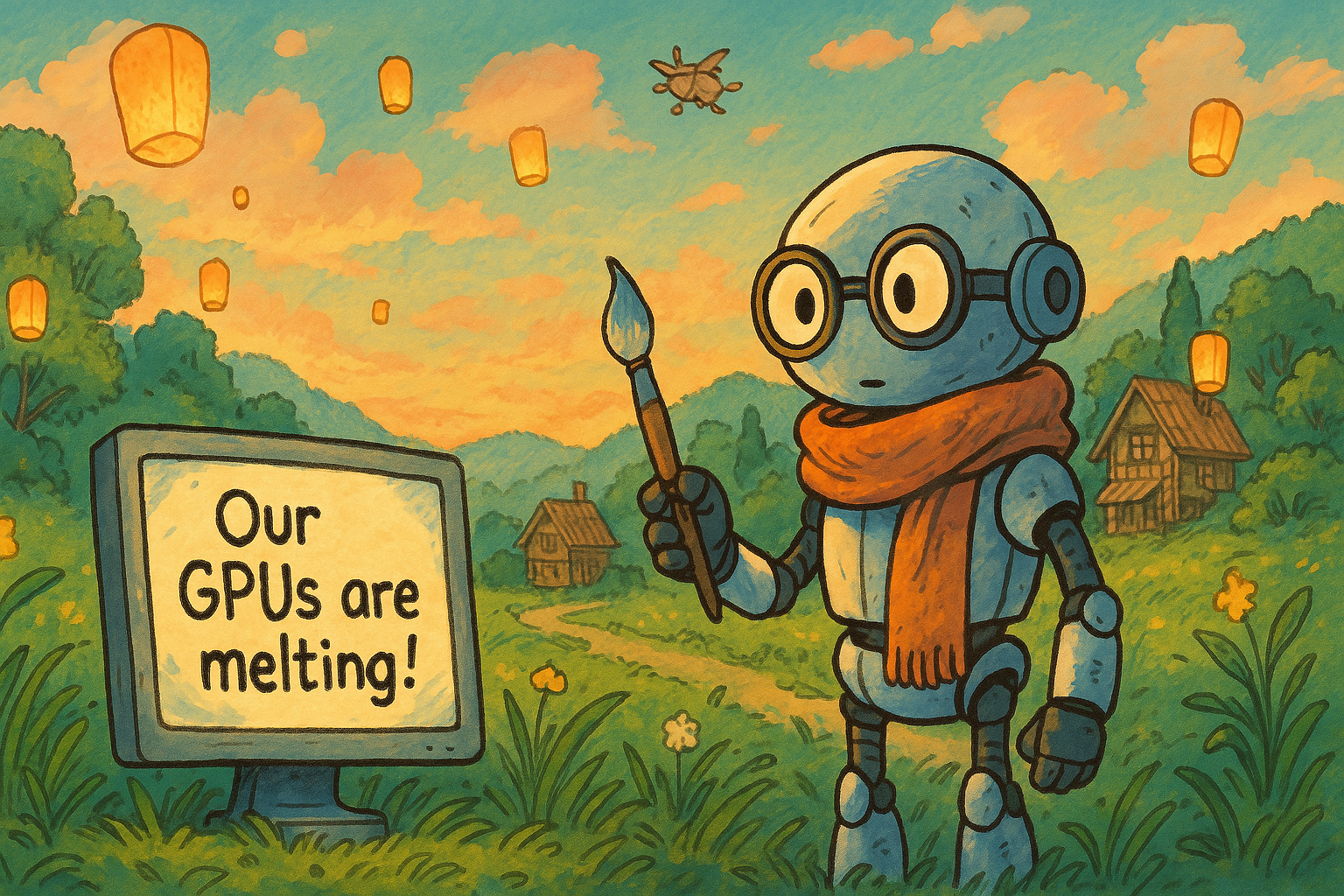There’s a certain kind of magic that wraps around you when you see a Ghibli-style image. It’s soft. It’s warm. It feels like coming home—even if the scene shows floating castles, forest spirits, or a quiet tea shop tucked away in a windy hilltop village. And lately, that magic has been everywhere.
In early 2025, AI-generated Ghibli-style images exploded across the internet. Social media timelines flooded with sleepy towns, fuzzy creatures, and children staring into glowing sunsets—all rendered in that unmistakable hand-painted look. The trend became so massive that OpenAI CEO Sam Altman joked, “Our GPUs are melting!” as he announced temporary limits on image generation to handle the overwhelming demand.
But to understand how we got here, we need to travel back—far before GPUs, prompts, and viral trends—to a small Japanese animation studio with a big dream.
What Exactly Is Ghibli-Style?
“Ghibli-style” refers to the visual language popularized by Studio Ghibli, the legendary Japanese animation house founded in 1985 by Hayao Miyazaki and Isao Takahata. Their films—like Spirited Away, My Neighbor Totoro, Howl’s Moving Castle, and Princess Mononoke—are known for:
• Lush, hand-drawn environments
• Gentle, watercolor-inspired palettes
• Expressive characters with wide-eyed wonder
• Themes of nature, childhood, and quiet reflection
• A kind of magical realism that feels grounded and otherworldly at the same time
But it’s not just the visuals. Ghibli-style is a feeling. It’s the sense that something beautiful could be waiting just beyond the next hill. It’s the magic in the mundane, the wonder in the everyday.
The Viral AI Boom
Fast-forward to today’s digital age. Thanks to image generation tools powered by AI, people can now type a prompt like “girl with a red umbrella walking through a rainy mountain village, Ghibli-style” and get a stunning illustration in seconds.
It didn’t take long before artists, dreamers, and even casual users started creating entire worlds inspired by Ghibli’s signature aesthetic. These images struck a nerve—especially with people yearning for something soft and nostalgic in our fast, high-tech world.
The sudden wave of uploads led to a massive spike in demand. OpenAI’s servers were overloaded, and Altman’s now-iconic “GPUs are melting” comment became the cherry on top of a cultural moment.
Why We Keep Coming Back to Ghibli
There’s a reason Ghibli-style keeps coming back—whether through hand-drawn classics or AI-generated tributes. In a noisy, chaotic world, these scenes whisper instead of shout. They remind us to slow down. To notice the wind in the trees. To imagine that a cat might just be a bus.
Ghibli’s timeless appeal lies in its ability to blend innocence with wisdom, fantasy with familiarity. It’s no wonder this aesthetic has become the visual comfort food for a generation.

Final Thoughts
Whether you’re a lifelong fan of Nausicaä of the Valley of the Wind or someone who just stumbled upon a dreamy AI-rendered tea shop in your feed, Ghibli-style has a way of tugging at the heart.
This isn’t just about nostalgia. It’s about creating art that feels human, even when it’s made by a machine. And that, perhaps, is the most Ghibli thing of all.

Leave a Reply